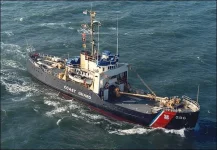Non skid is probably the most difficult aspect of painting a boat an owner can attempt. Laying down the granules evenly is tough. I've done it and would again but its not for the faint of heart. I did try spraying awlgrip griptex but it needs highly specialized spray equipment with big air like over 20 cfm continuous. My biggest is 16cfm. My method was using awlgrip griptex coarse in a rectangluar box that is able to be held in the hand with two layers of fine mesh window screen, the screen being separated by about one inch. yes, the two layers of screen made a difference over one. I would walk over the still tacky paint that was sprayed onto the deck and hit the side of the box with a small hammer sifting the granules onto the deck. Air tool blow off the excess and roll the deck with a mohair 1/4" nap roller with flattened paint of the same color. It will take a lot of paint and multiple coats but it looks more than acceptable, not factory, but the price difference is not comparable. Spraying more paint onto the broadcast granules didn't adequately cover them. Imron likely isn't what you think it is anymore. Imron is just a name now and is mainly a waterborne product. The old imron was the leading paint by far but voc laws spelled out its demise. Look elsewhere for catalyzed urethanes. I used PPG delfleet evolution FDGH, as close to the old imron as you'll get I believe and much less expensive than awlgrip or any 'marine' brand. A ready to spray gallon is likely around $550-600. lots of peripheral things too with catalyzed paint like ratio cups, wash thinner, respirators (that cover your eyes too) tons of tape and masking etc I agree with Bill those look like old holes that the filler has shrunk. use a catalyzed filler, not one that dries by evaporation of solvent.


